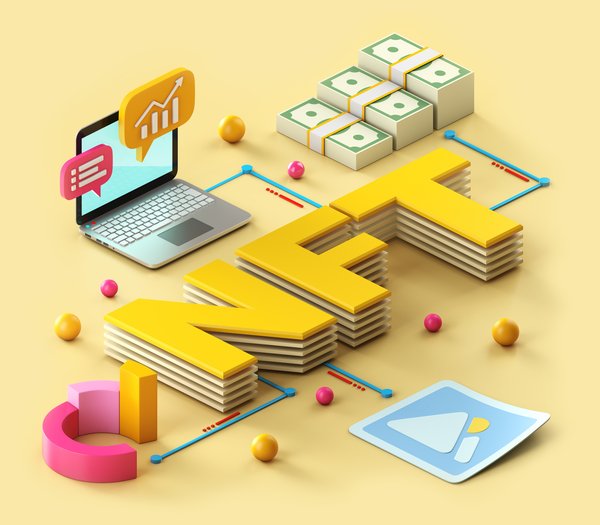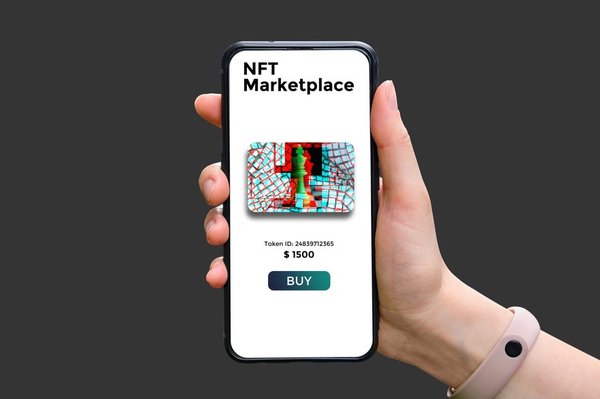NFTs have exploded in popularity in recent years among some digital art collectors and investors. Digital artwork has sold for millions of dollars, causing some speculators to scoop up NFTs in the hope of getting rich quick. The verdict is still out on whether this is a fleeting fad or a legitimate investment class. However, NFTs are an especially promising development for artists and creators. Here's a step-by-step guide on how to turn your work into an NFT, a process called minting.

How to mint NFTs
NFT stands for "non-fungible token," a type of digital certificate built on blockchain technology -- usually Ethereum (CRYPTO:ETH) -- that guarantees ownership of a unique digital asset. Minting digital assets (everything from art to music to articles) as NFTs is one way for artists to monetize their work.
Of course, selling digital files isn't new. But one of the more innovative uses for NFTs is the ability to guarantee that you get credit for the original creation. Because NFTs are recorded on a blockchain, the creator of the NFT is recorded in the public ledger. The record in the ledger gives you the ability to set a fee (known in the business world as a royalty) for whenever the digital asset is sold in the future and earn passive income over time if your work is sold on the secondary market.
Here's how you can go about minting. Each NFT marketplace has a slightly different method, so, for the sake of simplicity, I'm turning a picture I took of a French bulldog wearing sunglasses (which I unimaginatively named Frenchie Goes to Hollywood) into an NFT on OpenSea, which claims to have the largest NFT marketplace around.
1. Connect your wallet
To get started, you'll first need to open a crypto wallet and then connect it to the NFT marketplace. On OpenSea, click either the wallet icon or the "Create" button in the top right corner to get started. Other marketplaces will use a similar prompt to connect your wallet and create a profile.

Depending on the wallet you're using, such as MetaMask Wallet or Coinbase (NASDAQ:COIN) Wallet, and the device you're working from (desktop or mobile), you'll be asked to either connect your wallet using a QR code scanner on your smartphone or download your wallet to your computer.
Once your crypto wallet is connected and your marketplace profile created, it's time to complete your profile. Tell the NFT world about yourself, insert links to your website or social media pages, and specify which cryptos you'll accept as payment when someone purchases your NFTs.
2. Create your first item
From the home page of the marketplace, click the "Create" button in the upper right corner. From there you'll be prompted to upload a digital file and give your NFT a name. Optional fields include a description for your work, an external link to more info (like your website), and which blockchain to base the NFT on (like the Ethereum blockchain or the Ethereum-based protocol Polygon (CRYPTO:MATIC) if you're on OpenSea).

This is also where you can set up how much you'll be paid in royalties if your NFT gets sold again later on. Five percent to 10% of the secondary sales price is considered a standard royalty payout.
Click "Complete," and your first NFT has now been minted!
3. Make sure your wallet is funded
Selling an NFT (recording that a transaction has taken place between two parties on a blockchain) requires the network to do some computing. That transaction will cost some money, which is known as a "gas fee." Keep an eye on the required transaction fees, as some can be higher than you may expect.
To complete your first sale, make sure you've purchased some Ethereum (or another crypto you plan on using) on a crypto trading app and deposit it into your wallet. Depending on the marketplace, you can then transfer the crypto from your wallet to your NFT marketplace account. Some marketplaces, like OpenSea, allow you to purchase crypto directly from your marketplace profile by setting up a payment method such as a credit card.

If you are unsure how much crypto you will need to buy, it will be automatically calculated for you in the next step.
4. List your NFT for sale
Once you've minted your NFT, you're ready to sell it on the open market. Click on the "Sell" button in the upper right corner within your NFT's description page.

Now's the time to specify the details of your sale. Pick the type of sale -- a fixed price based on your cryptocurrency of choice or a timed auction. (On OpenSea, you set the royalty payouts for ongoing passive monetization of your work over time in step two, but other marketplaces might make that an option at this stage.) The marketplace will also disclose any related fees for selling. On OpenSea, the service fee (the price for handling the listing) is 2.5% of the NFT selling price.

Next, click "Complete listing." The marketplace will calculate the gas fee based on the cryptocurrency network's activity level at the time of listing and request payment from your crypto wallet. For me, it was about $180, but the fees will vary from minute to minute. Once the gas fee is paid and you approve the final terms, your NFT will be listed and available for purchase on the marketplace.
5. Manage your NFT business
Once your NFT is created and listed for sale, it's time to start engaging with your potential patrons. You can also create more NFTs and make them part of a collection, which might attract attention from art collectors or speculators. NFTs created on one marketplace can also be transferred and sold on a different one, although fees might be involved.
As with any online activity, interacting with users and collectors on NFT marketplaces builds rapport, which can help build your new NFT business. Monitor activity on your creations, look for feedback, and keep creating more work for digital collectors to purchase.
Early days for the NFT movement
Although there are reports of some digital creators making big, easy money by creating an NFT, bear in mind it's still early days for this movement. The online creator economy was an early adopter of NFTs, and the ability to passively monetize work long after the original sale could be a real game changer for artists, musicians, content producers, video game developers, and the like. However, minting and selling NFTs shouldn't be viewed as a get-rich-quick scheme. It will require some upfront costs to sell your digital assets in this fashion, and there's no guarantee anyone will be willing to purchase your work.
Turning your digital labor into a blockchain-based asset is nevertheless a promising field and one that could (eventually) completely reshape the way creators get paid. If you're an artist or digital entrepreneur, the NFT world is certainly worth exploring.



























